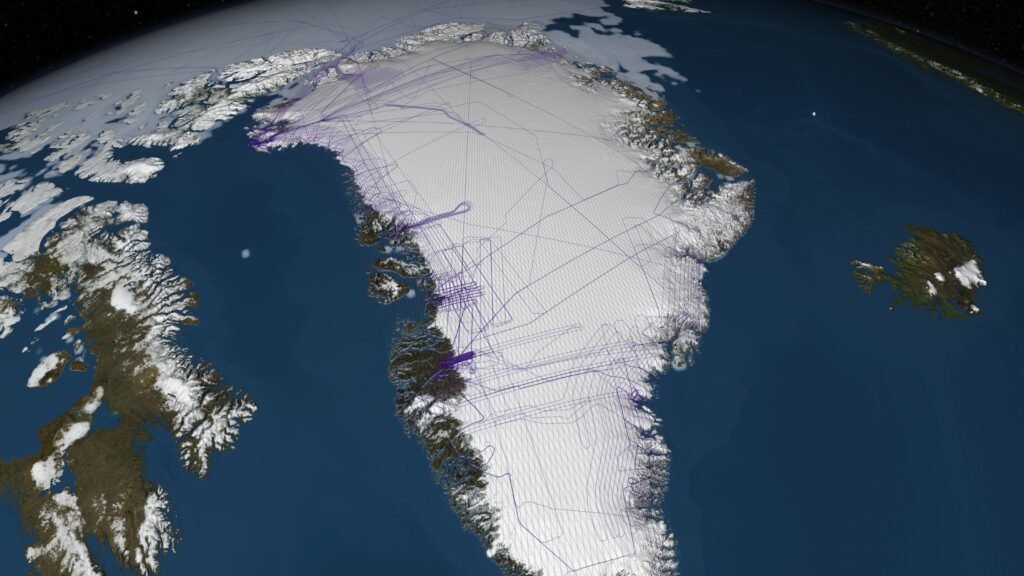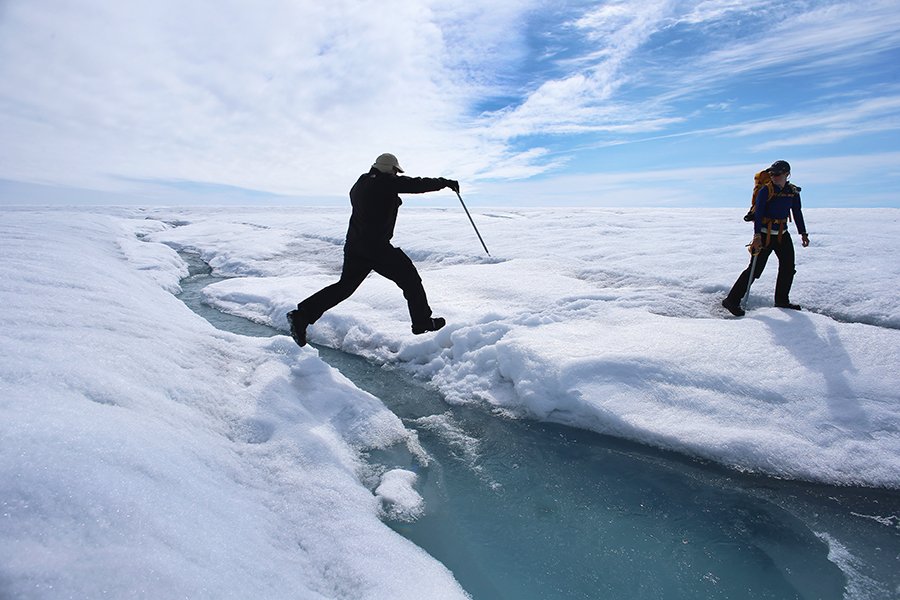Mohd Fahad
Due to the climate crisis, the Greenland ice sheet is losing an average of 30 million tons of ice every hour. This figure is 20 percent more than before. Scientists are concerned that depletion of this additional source of freshwater in the North Atlantic could lead to the collapse of a widespread system of ocean currents called the Atlantic Meridional Overturning Circulation (AMOC). They play an important role in redistributing heat and controlling weather patterns around the world.
One trillion tons of ice has been lost in four decades: Due to increase in global temperature, huge loss of ice sheets has been recorded in Greenland for decades. In another research, scientists associated with NASA’s Jet Propulsion Laboratory in the US analyzed more than two lakh manual and AI generated satellite images to track 207 glaciers in Greenland every month from 1985-2022. They observed widespread depletion of these glaciers and found that nearly a trillion tons of ice had been lost since 1985.
Glaciers shrunk from every part of the ice sheet: Scientists have warned that melting ice could increase risks such as destabilizing ocean currents, weather patterns, ecosystems and even global food security. Glaciers are shrinking in almost every part of the ice sheet. This has led to sea level rise and impacted climate around the world. The Greenland Ice Sheet is one of two remaining ice sheets in the world. The ice sheet covers about 80 percent of Greenland.
“The changes around Greenland are tremendous. Almost every glacier has retreated in the last few decades. The influx of fresh water into the North Atlantic Ocean will certainly weaken the AMOC. However, there is no idea how effective it will be,” said Dr. Chad Green, scientist at Jet Propulsion Laboratory, NASA.
Amazon drought
On the other hand, research has found that Climate change is the main culprit for record drought in the Amazon rainforest, which has dried up rivers, killed endangered dolphins and disrupted the lives of millions of people in the region.

Global warming has made droughts 30 times more likely to occur, increasing extreme temperatures and resulting in less rainfall, according to an analysis by World Weather Attribution, an international group of scientists. The study focused on June to November last year.
Scientists told Reuters last year that all nine countries in the Amazon rainforest, including Brazil, Colombia, Venezuela and Peru, are facing drought that is expected to worsen in 2024 after the rainy season begins in May.
Protecting the Amazon, the world’s largest rainforest, is considered vital to preventing climate change because its trees absorb huge amounts of greenhouse gas. The drought caused river levels to drop to their lowest levels on record in some parts of the region.
The study found that periodic warming in the eastern Pacific Ocean, known as El Nino, also contributed to the decline in precipitation, though not higher temperatures.
Although the region has faced at least three other intense droughts in the past 20 years, the scope of this drought was unprecedented and affected the entire Amazon basin, Rodrigues said.
In Brazil, a major tributary of the Amazon River fell to its lowest point since records began in 1902, with smaller streams almost disappearing.
At least 178 of the endangered pink and gray Amazon river dolphins died last year due to low water levels and high temperatures, Brazilian researchers said. Thousands of fish have also died due to low oxygen levels in the tributaries of the Amazon.
Greenland ice sheet
– Greenland Ice Sheet will raise global sea level by 23 feet if it melts
– 18 million years old major glaciers and ice caps are present in Greenland
– Snow is melting two to five times faster in summer than in 1850
(The writer is a Jaipur-based journalist and alumnus of Mass Communication Research Centre, Jamia Millia Islamia University)

